The Commercial School Number 2 "Dr. Antonio Bermejo" is a public secondary school in the city of Buenos Aires, Argentina. The school was founded in 1897 as a National Commercial School for women.1
The school opened in Corrientes Avenue 643–645 but was then moved to the following locations in chronological order: Corrientes Avenue 643–445 (until 1906), Bolívar 531, Bolívar 355, Humberto Primo 782 (until 1925), Callao Avenue 628, Juncal 1258 where it operated for 28 years until 14 July 1994. In that year the school occupied the rear side of the building located in Callao Avenue 628 in new premises built with access from Riobamba 623. The facade of the aforementioned location in Callao Avenue 628 together with its palm tree courtyard, the only one that survived out of the three the house originally had, was declared a National Historical Monument by Decree 1946/2012. Thus, the building preserved its features of mid-nineteenth Argentine architecture.2
The School of Commerce N°2 "Dr. Antonio Bermejo" is located in the historical site, Callao Avenue 628. Its facade is one of the Monuments of the City of Buenos Aires, Argentina3. The school has another entrance in Riobamba 623 – between Tucumán and Viamonte streets in the neighbourhood of Balbanera4.
Domingo Faustino Sarmiento conceived of the elementary public school system to educate the population. Within this framework, he started to create schools of primary education for women. His project gave birth to the "Escuela Normal", whose principal objective was to train prospective Argentinian teachers under the Pestalozzi 5 method of teaching, a German system that proposes passing from the concrete to the abstract, from the simple to the complex with gradual advances and well-defined objectives.
The "Escuela Normal" gave women access to secondary education and to a profession linked to female work. This period of organization of the Argentine oligarchic regime, known in Argentine history as the Generation of the 80s can be described as a process of consolidation of the modern state in our country. Argentina joined the world market as a producer of raw materials and generated a strong foreign investment in the service sector (transport, expansion of the electrical grid, banking, etc.).
The country would become, as referred to by various historians, as "the granary of the world"6 because of its high levels of global crops of wheat, corn, etc., and its exports of stock until the birth of the meat industry. In political terms, the country was undergoing a restricted democracy since there was civil liberty for everybody but political participation for a few. The increase in population with the arrival of massive immigration led to freedom of work, trade and property acquisition but it did not lead to political participation unless citizenship was adopted. Thus, the ruling class maintained the control of the native population while the president chose his successor. At the time, electoral fraud was used to keep power; besides, the Generation of the 80s utilised a mechanism of social control with the advent of hygienism, which affected the development of the Argentine system of education thanks to the 14207 Law, a law that rapidly reduced the national illiteracy rates.
Antonio Bermejo was Minister of Justice and Public Instruction under President José Evaristo Uriburu (during the period 1895–1898). During his term in office, he encouraged the creation of the National Museum of Fine Arts8 , the School of Philosophy and Letters (University of Buenos Aires), the Industrial School Otto Krause and the National Commercial School for women, which gave women access to the labour market as domestic servants or textile workers. The economic growth of the country generated new employment opportunities in trade and in state administration. This school was founded in 1897 when Bermejo pushed a proposal through Congress to fund a Commercial School for women. Other commercial schools had been created in the country and on 16 February 1905 in order to give them a general organic framework, the Executive Power with Dr. Joaquín V. González as Minister of Public Instruction, issued a decree dividing the existing schools into three categories: High, Middle and Elementary. The School of Commerce for women appertained to the first category. On 28 February 1910, it was renamed High School of Commerce for Women. Subsequently, as requested in writing by the Schools Management to the Minister of Justice and Public Instruction, Dr. Manuel María de Iriondo, the school was given the name of his founder, Dr. Antonio Bermejo. On 3 November 1932, President Agustín P. Justo9 sent the confirmation of the requested name to the school headmistress, Zulema M. de Liddle. On 19 October 1933, a bust of Dr. Antonio Bermejo is unveiled with the presence of Dr. Manuel María de Iriondo (President and Minister of the Supreme Court of the Argentine Nation) and the following authorities: Roberto Repetto, Antonio Sagarna, Luis Lima y Celestino Pérez, the president of the National Counsel of Education, Engineer Octavio Sergio Pico, the head of the Military House of the Presidency of Argentina, Colonel José M. Sarobe, and Dr. Bermejo's relatives. Furthermore, commemorative medals were given, including one given to the founder's daughter, Lila Bermejo.
The first headmistress was Eusebia Silveyra de Rojas.10 The classes were given in the night shift because the female students worked during the day. Two of its students were Eva Basabilvaso y Leonor Scout de Linay. The students attended school for two years and among the subjects dictated there was Telegraphy which, as stated in the economic history of Argentina, facilitated the communications of the country's agro-export model. The school counted with a school enrolment of 101 female students. The morning shift started in 1905 and the first commercial female students graduated in 1911. The school had a leading national role in training women for commercial work. In 1985 the school inaugurated its first co-educational courses when it began enrolling male students.
The school was staffed with teachers that had a prominent political, cultural and social role. Among these are:
1934: Roger Balet Prize (Sembrador de escuelas).15
1961: Jaime Malamud Prize.
1968: Marta Fiora de Romero Victorica Prize.
1965: The Buenos Aires Stock Exchange Foundation Prize.
1970: The school cooperative implemented the gold medal and plaque awards.

Justo José de Urquiza y García was an Argentine general and politician who served as president of the Argentine Confederation from 1854 to 1860.

Agustín Pedro Justo Rolón was an Argentine military officer, diplomat and politician, who served as the president of Argentina from 1932 to 1938 during the Infamous Decade. Justo took part in the coup of 1930, becoming president two years later thanks to widespread electoral fraud. His presidency was part of the period known as the Infamous Decade, which lasted from 1930 until 1943. He established the country's central bank and introduced a nationwide income tax.
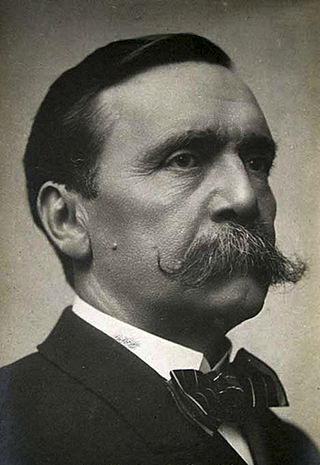
Carlos Enrique José Pellegrini Bevans was Vice President of Argentina and became President of Argentina from August 6, 1890 to October 12, 1892, upon Miguel Ángel Juárez Celman's resignation.

Recoleta is a barrio or neighborhood of Buenos Aires, Argentina, located in the northern part of the city, by the Río de la Plata. The area is perhaps best known to be the home of the distinguished Recoleta Cemetery. It is a traditional upper-class and conservative neighborhood with some of the priciest real estate in the city, known for Paris-style townhouses, lavish former palaces and posh boutiques.

Colegio Nacional de Buenos Aires is a public high school in Buenos Aires, Argentina, affiliated to the University of Buenos Aires. In the tradition of the European gymnasium it provides a free education that includes classical languages such as Latin and Greek. The school is one of the most prestigious in Latin America. Its alumni include many personalities, including two Nobel laureates and four Presidents of Argentina.

The Escuela Superior de Comercio Carlos Pellegrini is a public high school in Buenos Aires, and it is one of the most prestigious in Argentina and Latin America.

José Patricio Guggiari Corniglione was a Paraguayan politician by the Partido Liberal Radical Auténtico.
Departments form the second level of administrative division, and are subdivided in municipalities. They are extended in all of Argentina except for the Province of Buenos Aires and the Autonomous City of Buenos Aires, the national capital, each of which has different administrative arrangements.
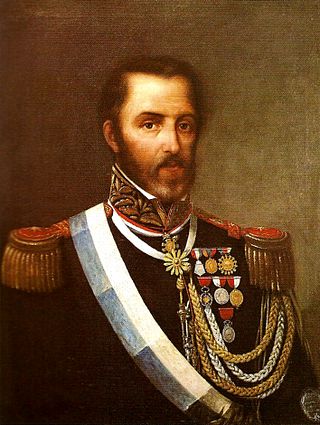
Juan Galo Lavalle was an Argentine military and political figure, from the Unitarian Party.

Florida is a neighborhood in Vicente López Partido, Buenos Aires Province, Argentina. The community is a suburb in the Buenos Aires metropolitan area. In 2020 the population was estimated at 48,158, making it the second most populated neighborhood in Vicente López. It is located 15 kilometers north of downtown Buenos Aires.

Villa Lugano is a barrio (neighbourhood) in Buenos Aires, Argentina, located in the south of the city. It has a population of approximately 114,000 people. It is delimited by Avenida Eva Perón, Avenida General Paz, Calle José Barros Pazos, Avenida Lisandro de la Torre, Avenida Coronel Roca and Avenida Escalada. To the south-east it limits with La Matanza Partido.
Caseros is a city in Buenos Aires Province, Argentina. It is the head town of the Tres de Febrero Partido which forms part of the Greater Buenos Aires urban conurbation.

Ramos Mejía is a city in La Matanza Partido, Buenos Aires Province, Argentina. The town has an area of 11.9 km2 (4.6 sq mi) and a population of 98,547. The city is one of the largest commercial districts in the Western area of Greater Buenos Aires.
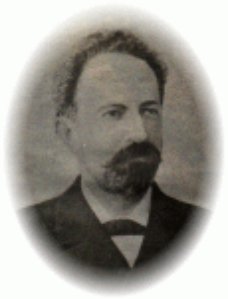
José Benjamín Zubiaur (1856–1921) was an Argentine educator. Promoter of sport, physical education, and the modern Olympic movement. He was one of the thirteen original members of the International Olympic Committee (IOC). He was the rector of the Colegio del Uruguay and Director at the Escuelas de la provincia de Corrientes. After 1915 he was Director of Education, Ministry of Education. He was characterized by their innovative teaching ideas to expand education to all social sectors, including content such as physical education, industrial education, practical activities, etc. as well as methods like night school, rural schools, education both sexes combined, and so on.

The State of Buenos Aires was a secessionist republic resulting from the overthrow of the Argentine Confederation government in the Province of Buenos Aires on September 11, 1852. The State of Buenos Aires was never recognized by the Confederation; it remained, however, independent under its own government and constitution. Buenos Aires rejoined the Argentine Confederation after the former's victory at the Battle of Pavón in 1861.
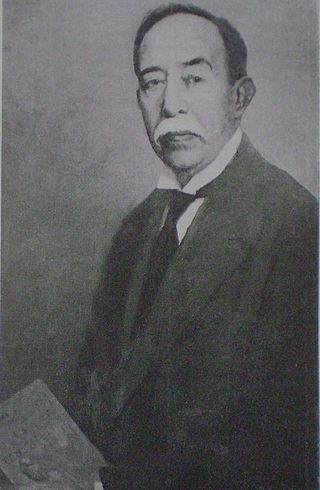
Antonio Bermejo was an Argentine judge, lawyer and politician. Bermejo, who was born in Chivilcoy, was a lawyer, judge and Argentinian politician, Supreme Court of Argentina judge between 1903 and 1905, and president of the Court from 1905 to his death in Buenos Aires.

The Escuela Técnica Raggio is a government-run secondary school in Buenos Aires, Argentina. The school is located in Nuñez, on Avenida del Libertador near Avenida General Paz.
Events from the year 1929 in Argentina

The Colegio del Uruguay is an Argentine educational institution, created by then Governor of Entre Ríos Justo José de Urquiza in the 28th of July 1849. It was the first in the country to be secular and free. Nowadays, it serves circa 1200 students.
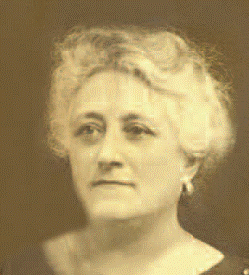
Sara Justo was an Argentine women's rights activist, educator and dentist. She was a leader in the women's rights movement of Argentina early in the 20th century, supporting women's suffrage and co-founding both the Women's Pro-Suffrage Committee and the Feminist Center of Argentina. She was one of the first four women dentists in Argentina, graduating from the University of Buenos Aires in 1901.